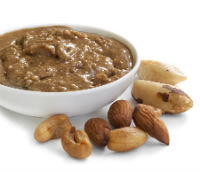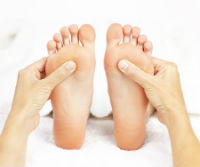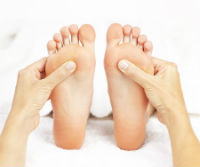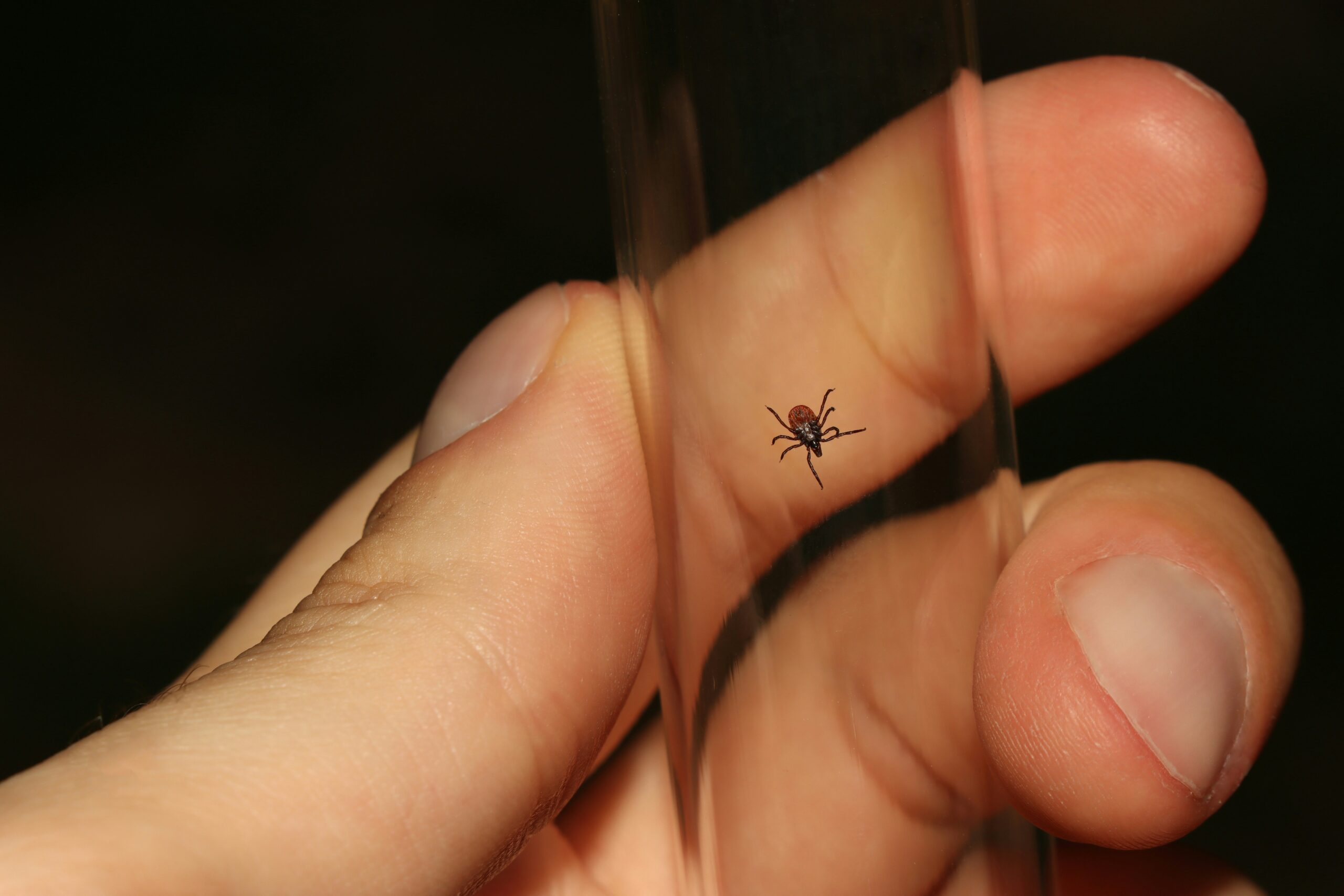JULY 2015
WHAT’S NEW
THE BUTTERFLY INSIDE YOU: THE TINY, MIGHTY THYROID GLAND

When the thyroid is not functioning properly, a chain reaction of hormonal events takes place that involves many other glands and hormones of the endocrine system and the bodily systems they regulate. The end result is one of two primary types of health conditions: hyperthyroidism or hypothyroidism.
HYPERthyroidism results when the thyroid is overactive. Think of hyperthyroidism like a butterfly that can’t stop fluttering its wings. Everything is on overdrive, including metabolism, frequency of bowels, emotions (anxiousness), increased sweating, and- for lady butterflies only- very light menstruation or cessation of the menstrual cycle. This butterfly often feels hot and can’t maintain a healthy weight. There are also bouts of exhaustion from trying to maintain this intense state of arousal.
HYPOthyroidism results when the thyroid is under-active. This butterfly just can’t get its wings to go. It’s gained weight, feels sluggish, and has brittle hair and nails. It feels cold and tired, is kind of depressed, and suffers from constipation. The lady butterflies usually have irregular, heavy menstruation.
5 WAYS TO KEEP YOUR THYROID HEALTHY
1. EAT FROM THE SEA. The sea provides many natural sources of iodine, a building block of the thyroid hormone. Table salt has a high concentration of iodine, but it can raise blood pressure. Instead, opt for seaweed in a salad. Fish oil provides essential fatty acids that reduce inflammation, which plays a role in causing autoimmune diseases. If taking fish oil, ensure that it is high quality fish oil and third party tested for heavy metal toxicity.
2. EAT FROM THE EARTH. Eat foods high in B vitamins, which are precursors to thyroid hormones and influence cell energy. Balance your diet with nuts and seeds, legumes, and whole grains.
3. RELAX. A daily relaxation practice, such as just 10 minutes a day of silence and deep breathing, can make a difference in the state of mind and body.
4. MOVE IT! Exercise at least 30 minutes a day. Yoga is particularly good for thyroid health, including poses such as butterfly, fish pose, shoulder stand, and child’s pose.
5. GET SUPPLEMENT-AL INSURANCE. Our diets aren’t perfect, so supplementing with a high quality vitamin/mineral or botanical (herb) regimen can provide extra insurance against exposure to stress, toxins, and perhaps your own family history. Be sure to consult with your wellness practitioner about the best nutraceutical products for you.
If you suspect a thyroid condition, talk with your wellness provider right away. There are a variety of tests that can help your doctor create an appropriate treatment plan.
REFERENCES
- American Association of Naturopathic Physicians. “Natural Therapies for Hypothyroidism.” October 11, 2013.
- American Thyroid Association. “ATA Patient Education Web Brochures.” Accessed May 2015.
- Hormone Health Network. “Your Thyroid: What You Need to Know.” Accessed May 2015.
- Women to Women. “Alternative Hypothyroidism Treatment.” Accessed May 2015.
FOOD FOR THOUGHT. . .
“It’s no coincidence that four of the six letters in Health are Heal.” – Ed Northstrum
NUTRACEUTICALS FOR HEALTHY HAIR, SKIN, AND NAILS

Vitamin formulas for healthy hair, skin, and nails contain many of the same nutrients that your entire body needs for growth and maintenance of cells. Hair, skin, and nails also respond well to vitamins that support keratin production. Keratin is a protein that is an essential building block for the integumentary system. Talk to your wellness practitioner about the following key supplements that can give strength and shine to your hair, skin, and nails.
BIOTIN & THE MIGHTY B VITAMINS. The B-complex (B12, B3, and B6) is vital for hair and skin growth. Biotin, also a B vitamin, is sometimes used to help reduce or prevent hair loss. Some people do not get enough biotin in their diet, resulting in a deficiency. In such cases, research has shown taking biotin supplements may help alleviate hair thinning. Biotin-rich foods include peanut butter, eggs, avocados, legumes, and bananas.
VITAMIN D is important for hair follicle cycling, especially for individuals who live in northern parts of the United States where sunlight is limited. Mushrooms, organic liver (because the liver is one of the primary organs involved in filtering toxins, only eat liver that is from a trusted source), and grains are great sources of vitamin D.
ZINC is a key mineral for hair growth, wound healing, healthy skin, and immune function. Zinc is found in foods such as red meat, oysters, lamb, turkey, pumpkin seeds, and chocolate.
HORSETAIL, a herb, acts as an antibacterial and has a re-mineralizing effect. It is rich in flavonoids, potassium, and silicon, which are vital to the functioning of rapidly growing tissues such as skin and nails. It also has a key role in the synthesis of collagen.
VITAMINS C & E both have many important functions, including protecting cells from damage and boosting immunity. Good sources are seeds, dark green veggies, safflower oil, and citrus fruits.
ESSENTIAL FATTY ACIDS. Omega-3 and omega-6 fats have been shown to reduce inflammation and support skin and scalp health. Although you can obtain essential fatty acids from eating cold-water fish such as mackerel, salmon, sardines, anchovies, tuna, pollock, or shrimp, these fish can contain high levels of heavy metals— not a good thing. If you are averse to eating fish, or are vegan, a flaxseed oil supplement is a wonderful alternative.
REFERENCES
- National Institutes of Health. “Vitamin and Minerals Supplement Fact Sheets.” Accessed May 2015.
- Szyszkowska, B., et al. “The Influence of Selected Ingredients of Dietary Supplements on Skin Condition.” Postepy Dermatologii i Alergologii 31, no. 3 (June 2014): 174–181.
RECIPE: BRAZIL NUT BUTTER
There is a 2 to 1 ratio of nuts to nut butter. To make 1 cup of nut butter, start with 2 cups of shelled nuts.

Indeed, Brazil nuts are calorie and nutrient dense. High in mono- and polyunsaturated fats, including omega-6 fatty acids, a one-ounce (6-7 nuts) serving provides about 185 calories, 5 grams of protein, and a rich supply of magnesium, phosphorous, potassium, and selenium. In fact, Brazil nuts are the highest natural source of selenium (543 mcg in 1 oz.).
A potent micronutrient, scientific evidence to date suggests that selenium might play a role in the prevention or treatment of heart disease, cognitive decline, liver disease, some types of cancer, and thyroid disease. Selenium concentrations are highest in the thyroid gland, and it has a vital role in the functioning of the gland. Just two Brazil nuts a day make it easy for most people to meet their daily selenium requirement.
Don’t go overboard on Brazil nuts—too much selenium in the diet can cause brittle nails, alopecia, rash, upset stomach, and fatigue. The Institute of Medicine of the National Academy of Sciences advises a maximum limit of 45 mcg of selenium for kids and 400 mcg for adults daily. The best way to enjoy Brazil nuts is to combine a few with other types of nuts, seeds, and raisins. Sprinkle on salad, yogurt, or blend into a smoothie.
BRAZIL NUTS (Bertholletia excelsa)

A potent micronutrient, scientific evidence to date suggests that selenium might play a role in the prevention or treatment of heart disease, cognitive decline, liver disease, some types of cancer, and thyroid disease. Selenium concentrations are highest in the thyroid gland, and it has a vital role in the functioning of the gland. Just two Brazil nuts a day make it easy for most people to meet their daily selenium requirement.
Don’t go overboard on Brazil nuts—too much selenium in the diet can cause brittle nails, alopecia, rash, upset stomach, and fatigue. The Institute of Medicine of the National Academy of Sciences advises a maximum limit of 45 mcg of selenium for kids and 400 mcg for adults daily. The best way to enjoy Brazil nuts is to combine a few with other types of nuts, seeds, and raisins. Sprinkle on salad, yogurt, or blend into a smoothie.
REFERENCES
- National Institutes of Health. “Selenium: Dietary Supplement Fact Sheet.” Accessed May 2015.
- National Institutes of Health. “Selenium: Fact Sheet for Consumers.” Accessed May 2015.
- Nutrition and You. “Brazil Nuts Nutrition Facts.” Accessed May 2015.
LEMON BALM (Melissa officinalis)

In Europe, lemon balm has been used for treating thyroid problems and has shown an ability to regulate thyroid hormone production. It has been used in the U.S. as a complementary treatment for Graves’ disease, an autoimmune condition in which the thyroid gland is overactive.
Lemon balm may be formulated as a tea, tincture, or cream/ointment. Herbs do interact with other medicines and should not be taken without consulting your wellness practitioner for appropriate dosing
REFERENCES
- Restorative Medicine. “Database Search: Lemon Balm and Thyroid Disease.”
- University of Maryland Medical Center. “Lemon Balm.” Reviewed April 4, 2012.
- The Herb Society of America. “Guide to Lemon Balm.”
- University of Maryland Medical Center. “Hyperthyroidism.” Reviewed April 4, 2012.
REFLEXOLOGY FOR THYROID HEALTH

Generally, reflexology is suitable for everyone, from newborn babies to those receiving end of life care. A reflexologist tailors each session to the individual, taking into account both physical and emotional factors that might be affecting you. Reflexologists aim to work alongside both allopathic and holistic healthcare practitioners to promote well-being for their clients.
CAM researchers have investigated reflexology for a variety of health conditions, such as breast cancer, diabetes, anxiety, back pain, menstrual issues, post-operative recovery, chronic fatigue, and thyroid dysfunction. The premise for treating thyroid conditions with reflexology is that opening the energy flow through the thyroid gland can balance both hyperthyroid and hypothyroid conditions by supporting the gland in regulating homeostasis, the body’s ideal state of equilibrium. In some studies of thyroid goiter or cancer, reflexology reduced pain and promoted relaxation, which can boost healing.
While there have been promising results in many case studies (of just one person or a small group), there is still a need for further research to definitively indicate the effectiveness of reflexology for treating illness.
REFERENCES
- Reflexology Association of America. “Reflexology USA.”
- Reflexology Research. “Reflexology for Thyroid.” Accessed May 2015.
- Reflexology Research Project Presents.”Reflexology Research.”
GUIDING PRINCIPLES

First Do not Harm

Identify and Treat the cause

Healing Power of Nature

Doctor as Teachers

Treat the Whole

Prevention is best Medicine
Follow us on instagram
BLOG
Become an educated consumer with our Indigo Blogs and prevent dis-ease.
Our Doctors have been featured in:









